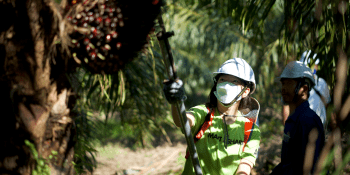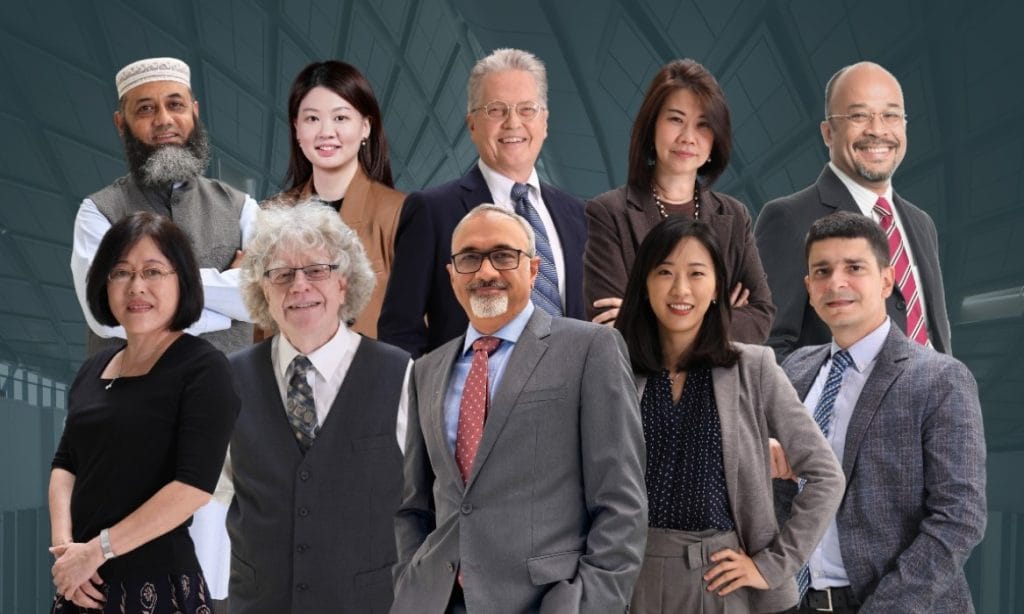At Asia School of Business we are in the business of training people for the future and equip them with the skills required for the next decade or so. Quite a big ask, right? So how do we know what skills are future proof? Do we all need to learn hard skills like AI, coding, bitcoins, finance? Or do we need to work on our soft skills such as communication, negotiation, managing people, etc.
What are the “soft” and “hard” skills of the future is the question on everyone’s lips! Dictionaries define the word “soft” with words like smooth, mild, gentle, quiet, tender, and weak. Navigating competing perspectives and cultures does not come smoothly; pitching and presenting projects is not a tender act; handling and delivering critical feedback often is not mild; and dealing with office politics is certainly not for the weak.
So why do we still refer to these skills as soft? Analogously, “hard” is defined with words like firm, rigid, resistant, free of weakness, unlikely to change, harsh, severe. But should the so-called “hard” skills required today—such as coding, system dynamics, finance, accounting, statistics, mathematics, machine learning, engineering—be defined by these attributes? Considering the constant changes in technology, and the subsequent need for users to adapt, these characteristics hardly seem fitting.
Soft and Hard skills – 1972
Did you know? The soft- and hard-skill terminology was coined in 1972 by a research team in the U.S. Army. The team observed that a platoon’s success resided not only in having people with strong machine operation skills, but also in having individuals who could manage and supervise teams, along with other skills.
So they defined soft skills as those that involve actions affecting primarily people and paper, such as inspecting troops, supervising office personnel, conducting studies, preparing maintenance and efficiency reports, and designing bridge structures. In contrast, hard skills were defined as those that require one to work with machines.
But at ASB, we realized that before we answer this question, we want to understand whew still call these fundamental skills “soft” and hard” and we challenge the traditional terminology of “soft and hard” skills and replaced it instead with “smart” and “sharp” skills, along with a pedagogical change to reflect the linguistic change. So “Enough with ‘Soft’ and ‘Hard’ Skills—Let’s Get Smart and Sharp Instead” Smart skills are needed to respond to situations and challenges with intelligence and diplomacy.
They include, among others, creative and critical thinking, emotional maturity and empathy, cognitive readiness, social intelligence, adaptability, ethical and cultural awareness, self-awareness, personal discipline, a global mindset, collaboration and team work (from brainstorming to execution), knowing when to listen, validation, humility, entrepreneurial mindset, followership, humility, flexibility, willingness to learn, innovation, open mindedness, creativity, dependability, managing up, down and across, networking, etc.
Read more about the top SMART skills at ASB,
Sharp Skills at ASB
The “sharp” skills comprise technical capabilities such as data analytics, optimization, risk assessment, system dynamics, and machine learning, for example. So without further ado, here are the “sharp” skills that we at ASB look for most when I hire or work with someone, and the skills that I want my #ASB students to develop along with their “sharp” skills.
- Optimization = the process of making a design, system, or decision, as fully perfect, functional, or effective as possible
- Science-based management = the process of making decisions through the conscientious, explicit and judicious use of current best evidence in making decisions about the problem or a situation
- Managerial economics = the application of the economic concepts, theories, tools, and methodologies to solve practical problems in a business
- Analytical reasoning = the ability to look at information and discern patterns within it
- Digital literacy = the ability to use information and communication technologies to find, evaluate, create, and communicate information, requiring both cognitive and technical skills
- Machine learning = the study of computer algorithms that improve automatically through experience
- A,B,C,D (Artificial Intelligence, Blockchain, Cloud & Big Data) = enablers for digital transformation
- Data visualization = the visual representation of information
- System Dynamics = the analysis of how actions and reactions cause and influence each other, and how and why elements and processes in the system change
- Statistical thinking = the ability to align one’s thoughts with the fundamental ideas of statistics, allowing the person to make better decisions in any given situation.
So now the question is how you manage to build up all these skills? There is a complicated answer (which probably requires a book) but for us, the simple answer is constant sharpening of these skills and the realization of becoming a life long Lerner. So, let us know, what are your top SHARP skills? What are you looking most to develop and what are you looking most for in other people?
Prof.Dr. Loredana Padurean is the Associate Dean and Faculty Director for Action Learning at Asia School of Business and she holds an appointment as International Faculty Fellow at MIT Sloan where she teaches in the Executive Education program on topics of intra/entrepreneurship. At ASB, Prof. Loredana has been one of the key nailers behind the establishment of the school and in particular the development of the globally recognized action learning program at ASB. She is a global entrepreneurial academic and international public and Ted speaker in US, Asia Pacific and Europe. She can be contacted at loredana@asb.edu.my If you are interested to know more about our Action Learning click here.







